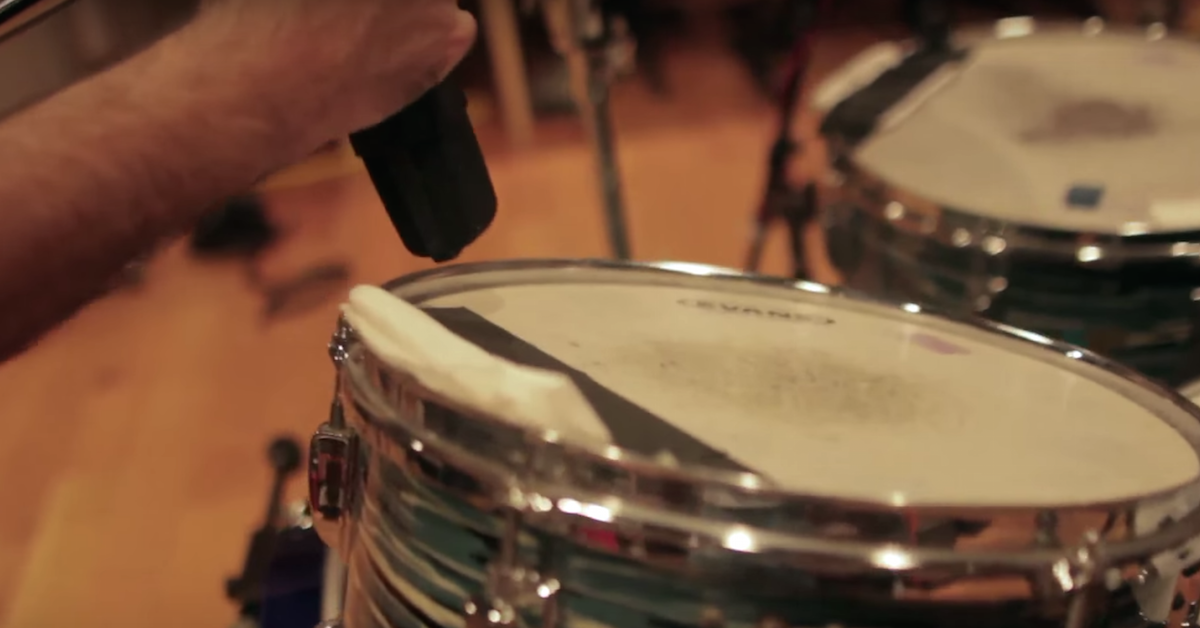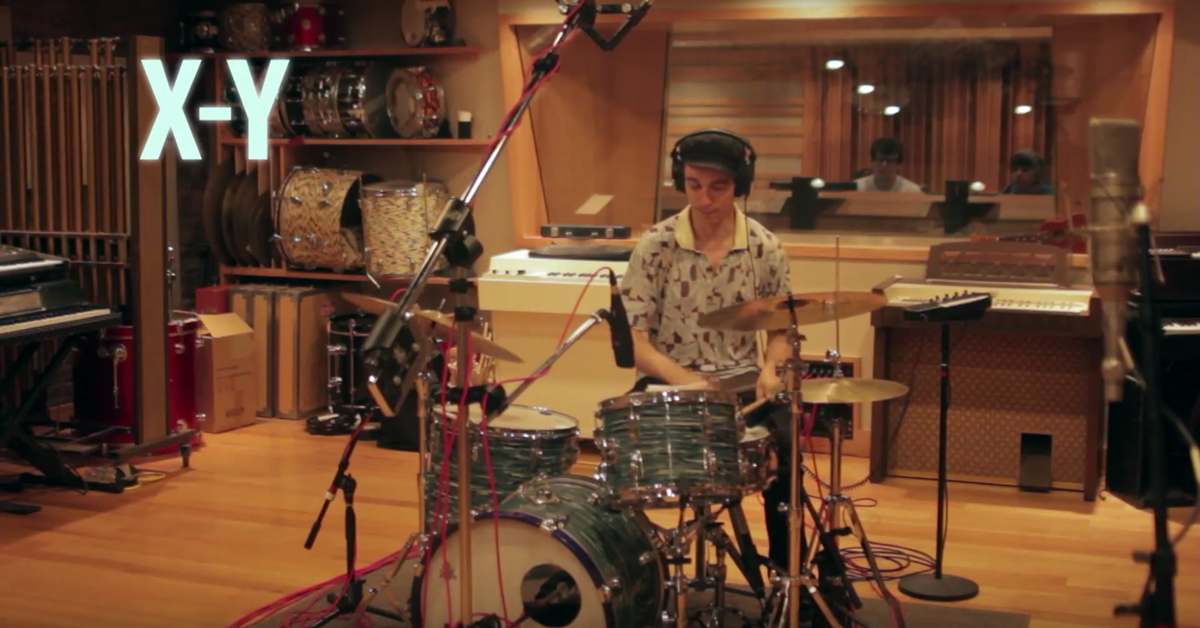5 Common Recording Mistakes to Avoid
Article Content
With the flexibility of digital music production, it can be easy to think of tracking as a relatively unimportant step in the process of recording music. If your sound is mostly dependent on digital processing, why stress about little details like mic placement or choosing a preamp? Aren’t those considerations just artifacts of the tape era, rendered obsolete by the magic of modern digital trickery?
Hell no! Well, maybe sometimes. While it’s true that some of the aspects of production that used to make recording much more time consuming have become non-issues in the digital era, tracking is still an integral part of the process, and there are still plenty of ways to screw it up.
Even if the heart and soul of your process happens in-the-box, if your music involves recording sounds in the real world, then it’s worth taking the time to get tracking right. Often, a few extra minutes spent during the tracking stage can help save much more time spent editing or dialing effects further down the line. That difference translates to more time spent feeling inspired and less time wasted on “solving problems” that could have been avoided in the first place.
Another big reason to take care during tracking has to do with a phenomenon called decision fatigue. Simply put, decision fatigue refers to our diminishing ability to make the best choice consistently when we are forced to make lots of decisions. At the end of a long session involving many production choices, our judgment falters.
Committing to production choices early, during the tracking process, is a great way to make a decision once and move on. Leaving things open-ended and repeatedly tweaking plugins in search of some kind of elusive “magic” can lead to lost perspective and wasted time.
Those of you whose process involves recording instruments with microphones in physical space may find the most value in this article, people whose music mostly happens in the digital realm may find some inspiration here as well. Here are some of the most common tracking traps producers can fall into, and some ideas about how to avoid them.
1. Not Sculpting Your Tone
If your studio space is anything like mine, you have many, many more software options for shaping tone than hardware options. Having great sounding plugins at your disposal, though, is no reason to ignore the signal you’re feeding into them. If there are ways to influence the tone of an instrument during the tracking stage, taking the time to explore those options is almost always worth it.
If you’re recording electric guitar through an amp, make sure you like the sound you hear coming out of that amp — especially if the guitar tone is reliant on pedals.
If you’re recording drums, make sure they’re tuned to produce the sort of tone the song needs. (If you record drums but are not familiar with how drum tuning can affect drum tone, it’s worth taking the time to learn even just the basics of drum tuning.)
If your tone comes from plugins, I still recommend taking the time to sculpt each sound in your arrangement as you record the part, rather than dealing with those sorts of considerations while mixing. You’ll bring the track closer to your vision for it earlier on, and make better choices down the line as a result.
2. Recording Sloppy Performances
From tuning a pitchy vocal to tightening up timing, it’s gotten pretty easy to clean up imperfect performances in a DAW. And a lot of the time, we have no choice but to do this kind of digital cleanup. In those situations where doing one or two more takes might mean not having to do any editing down the line, though, it’s almost always worth it to invest the extra time.
Tuning and editing vocals can be time-consuming. If your singer can come closer to nailing the part by spending an extra 15 minutes in front of the mic, you might save yourself an hour of tedious work by having them do those extra takes. The same goes for “fixing” the timing of rhythmic parts, even using tools like Beat Detective or Flex Time. Not only does the fix take time, but the result can be robotic, lacking the sort of feel that a natural performance has.
I don’t know about you, but editing bad takes is quite possibly my least favorite aspect of music production. It leaves me feeling burnt out and uninspired. Taking the time to record solid performances can mean spending more of your session feeling creative and less time banging your head against the wall.
3. Recording Too Many Takes
Just like you can set yourself up with an editing nightmare by not pushing for a better take during tracking, you can set yourself up for a confusing mess by recording too many takes, too. As musicians get comfortable during tracking, they will typically start giving better and better performances after a couple takes.
Usually, though, there’s a point after which additional takes yield diminishing returns. Pushing past that point will get you lots of takes that may have small differences between them, but none of which is clearly “better.”
And now we’re back to that concept of decision fatigue. Comping a lead vocal from 20 mostly similar takes is almost guaranteed to make you lose perspective. Instead of recording endless takes, and then having to sort through the mess when lightning doesn’t strike, try to be focused while tracking. Keep recording takes until it feels like the artist or band has just hit their groove, then do one more. If that take is better than what came before, keep going! If there’s no real difference, it’s probably time to stop. Make sure you’ve got what you need and move on.
4. Careless Mic Choice and Placement
The way mic choice affects the sound of an instrument or vocal can be incredibly important to the way that instrument comes across in the recorded medium. Mics impart their own sonic character on the sound sources they capture, and if you have multiple mics at your disposal, taking the time to try a couple before hitting record can make all the difference in the world.
The various mic placement possibilities for recording even one instrument can warrant a full article on their own (there are quite a few on this site!) so I won’t be diving into specifics here. Suffice it to say, there is more than one mic placement that might work for any given instrument, and some instruments and ensembles require more complex mic techniques to really make them shine on the record.
Particularly for more complex acoustic instruments — drums, piano, harp, etc. — getting a full sound can be very much contingent on making the most of the way the instrument sounds in the space and placing mics accordingly. Take the time to try close and far, mono and stereo placements, as well as moving the players and instruments to different parts of the room. Record a few seconds of each mic placement and compare results, checking for phase issues in multi-mic setups.
I recently got to spend a day with Zach Fisher at Big Bad Sound shooting out mics and trying different placements for recording a drum kit. The variety of sounds we got from five different kick drum mics was astounding and clearly illustrates the impact mic choice can have on the sound you record.
Listen to these five different mics with five completely different tones: Audix D6, Electrovoice RE20, Shure Beta 52, Sennheiser MD421, and AKG D112. Make sure you’re listening on studio monitors or speakers that fully represent low frequencies for best results.
5. Not Recording Hot Enough … or Recording Too Hot
It’s important to make sure that the signal hitting your converter (or tape) is hot enough that it eclipses whatever noise floor your recording setup introduces. Recording an anemic signal can mean that any processing you use to make that track louder will also intensify the noise floor. Make sure that your preamp is gained to a healthy level, and that instruments or amps are outputting enough signal too.
Conversely, many preamps will begin to distort well below the point of actually clipping. Sometimes, this effect is exactly what you want!
Particularly with vintage analog hardware, a certain amount of subtle or not-so-subtle saturation with the gain cranked is part of the mojo. That being said, if your aim is to record something very clean, this kind of saturation can ruin a recording. Maybe you want your lead vocal to distort a bit on the loudest notes … and maybe you don’t. Take a moment to make sure that the incoming signal is hitting at the right level.
Conclusion
There really are occasions when inspiration flows so fast while tracking that there isn’t time to overthink things. And in those instances, by all means, prioritize capturing that magical performance. The rest of the time, though, more of a “measure twice, cut once” approach really does work best. Time spent fixing problems with poorly recorded audio can kill the momentum of a session, with endless tweaking of effects leading to burnt-out ears and decision fatigue.
For many of us, production is something that primarily happens in-the-box. But even in styles of music that involve more digital manipulation of sound, tracking is an opportunity to bring the music to life. I find that I get the best results when I take the time to get the most out of each stage of production: getting instruments to sound right live in the room, choosing mics, placements, and preamps that will represent them the best, and sculpting tone as necessary from there, with outboard processing or digitally.
From performance to tone, getting things right during tracking lays the foundation for making better choices through the rest of production and mixing.





